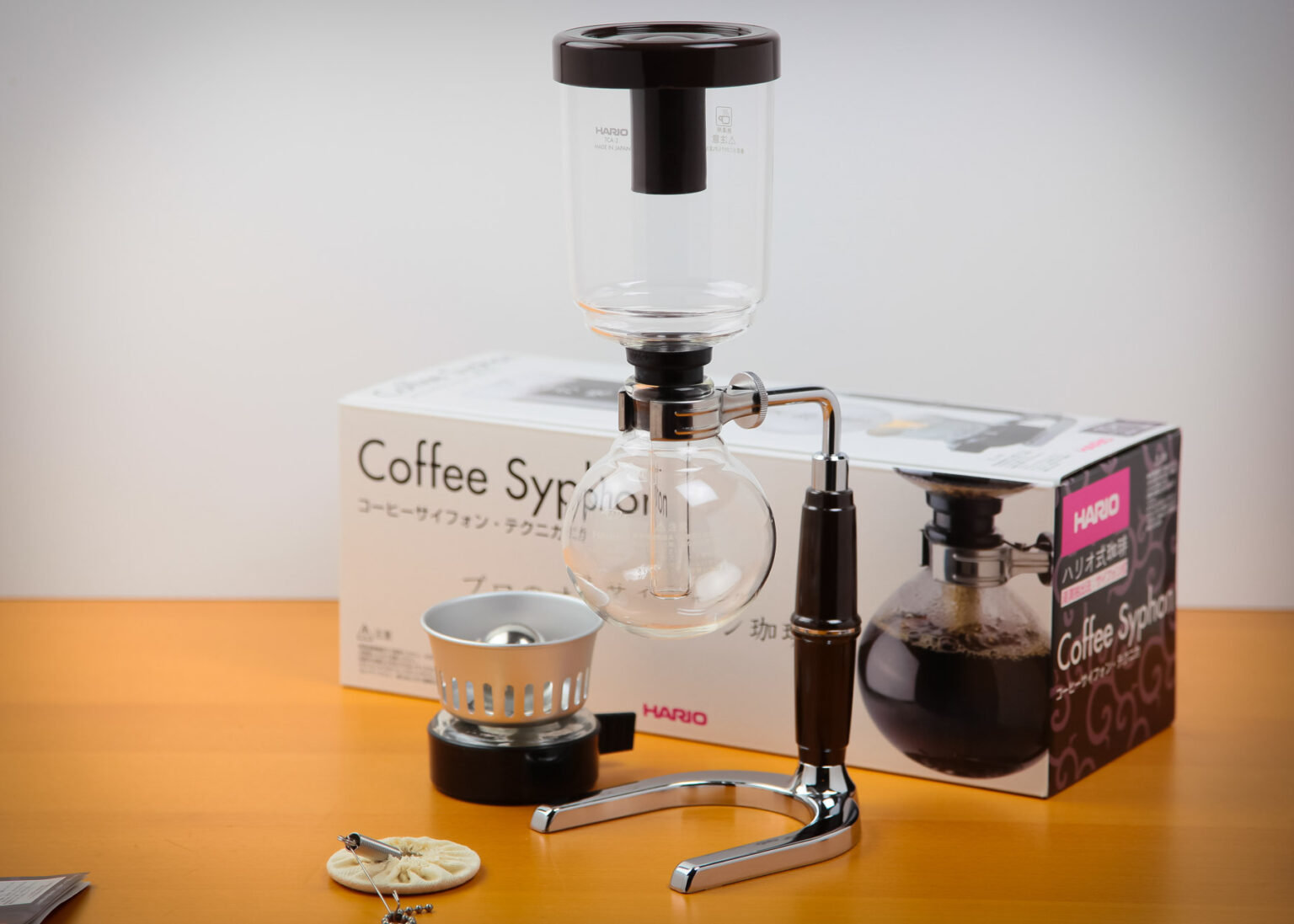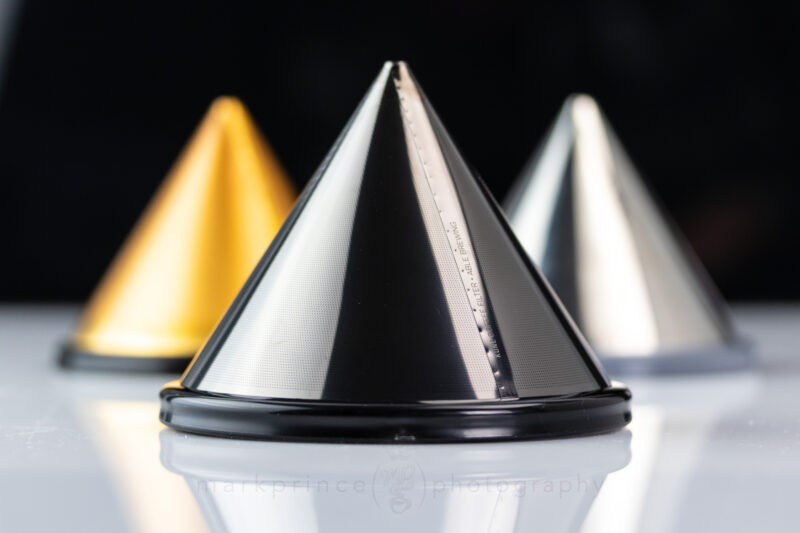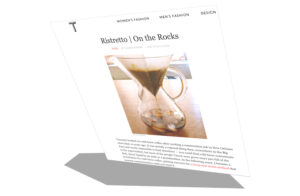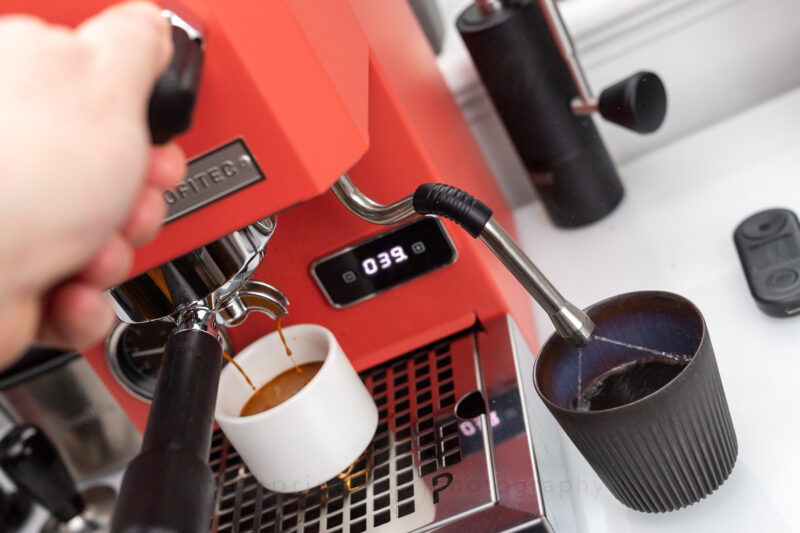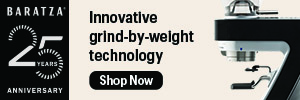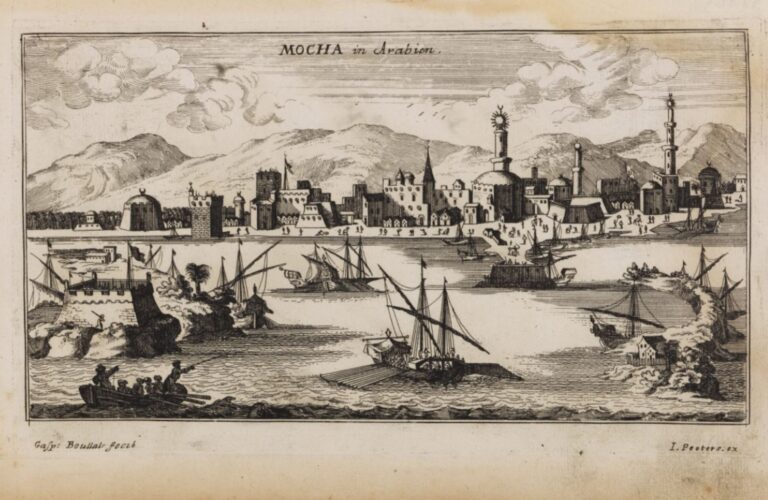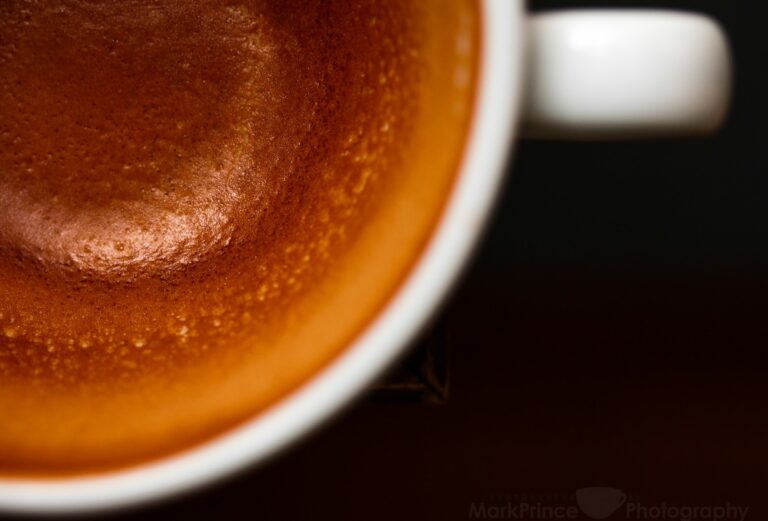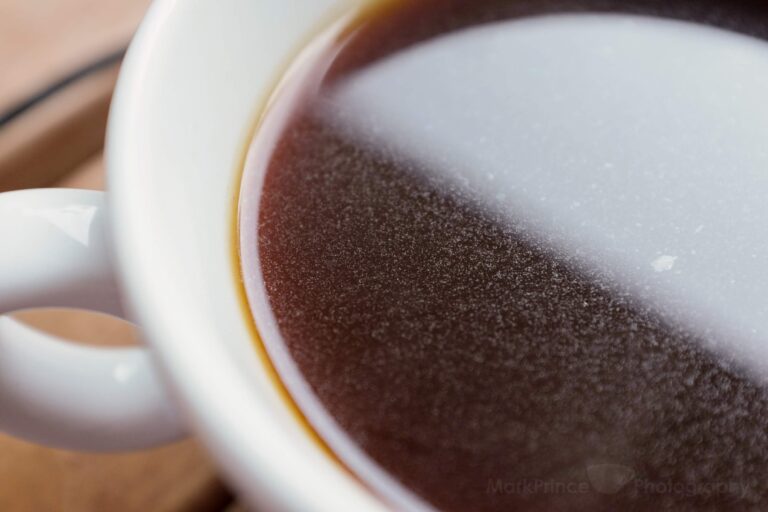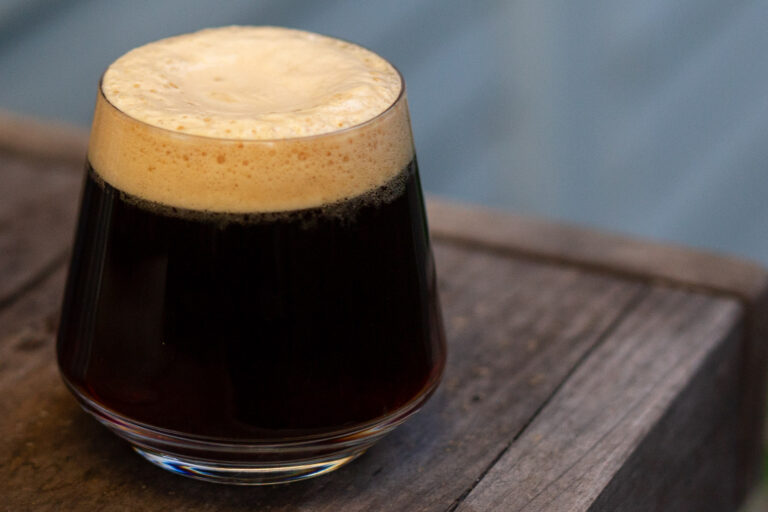What attracted me to CoffeeGeek was the fantastical assortment of ways to brew coffee displayed on the website. I remember the first time I saw the (old) how to on vacuum brewers (aka siphon coffee makers) and thought it was a combination of science and magic. When I signed on as a writer here, I told Mark (Prince, Senior Editor) about my fascination with these science shows, and he promptly shipped me a Hario Coffee “Syphon” TCA-2 Technica model to try out and write about.
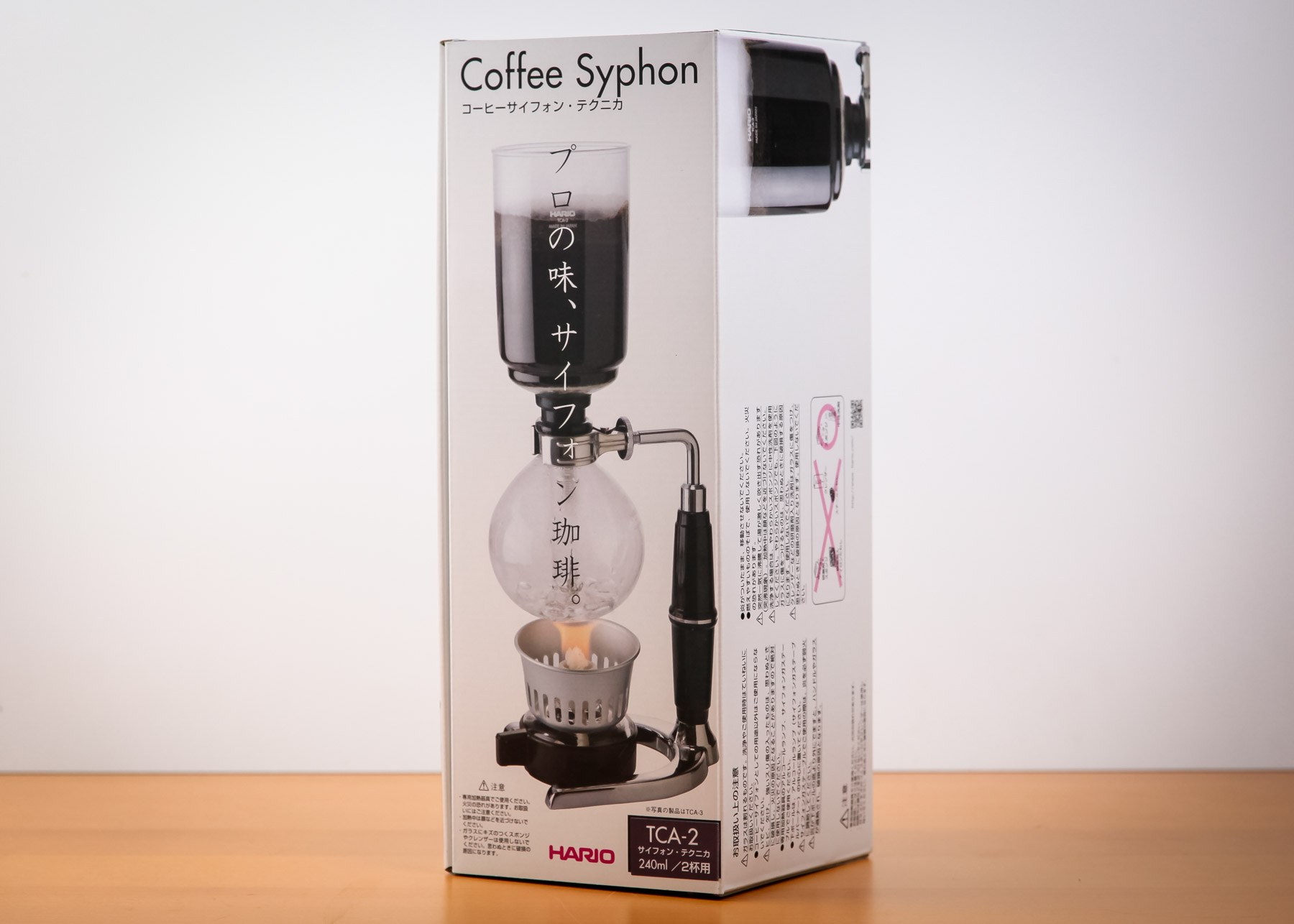
It Arrives
So there I was, staring at this strange contraption called a siphon coffee maker, wondering if it was a coffee-making apparatus or an alien spaceship that had somehow landed on my kitchen counter. With a mix of excitement and curiosity, I embarked on a siphon coffee adventure, hoping to unlock the secrets of this brewing marvel. I did my research, watching youtube vids, and relying heavily on the How To for Siphon Coffee right here on this website.
To get the journey moving along, I gathered all the necessary ingredients: fresh coffee beans, filtered water, a brand new Baratza Encore ESP grinder, a kettle to pre-heat the water, and the Hario Technica siphon coffee maker kit. I got the kettle going. Ground up the coffee, with luscious aromas filling the air, teasing my senses and building anticipation for the brewing process ahead.
With coffee grounds in hand, I began the final setup. The siphon coffee maker consists of two glass chambers, one stacked on top of the other, connected by a narrow tube. The lower chamber houses the water, while the upper chamber holds the coffee grounds. It all seemed straightforward enough—until I saw the small alcohol burner that accompanied the kit. Urk.
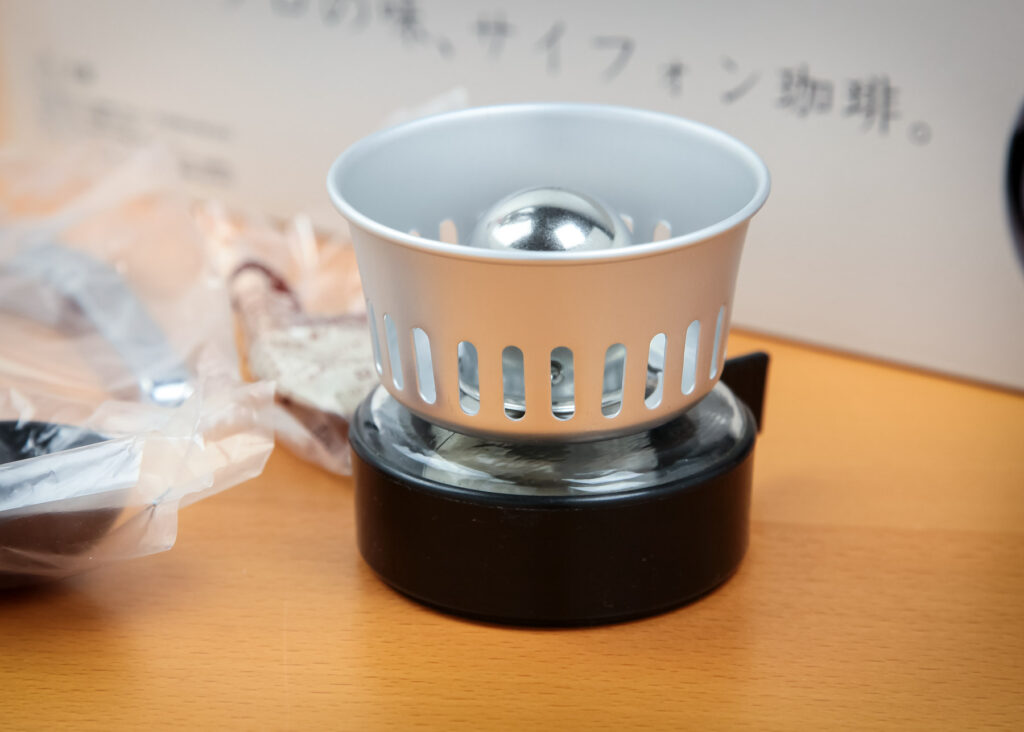
Okay. After a trip to the automotive (!!) store, where I picked up some denatured alcohol for the cloth wick burner, I was back home, ready to try again. (sidenote – do not use isopropyl alcohol, only denatured alcohol or methyl hydrate (in Canada) for these things).
Let’s Get Siphoning!
Coffee: ground up. Filtered water: boiled in a kettle. Siphon prepared with the cloth filter apparatus attached and sprung loaded. 350ml of hot water poured into the lower globe. Now, the nervous part.
I gingerly moved the cloth wick burner under the lower glob, and feeling a twinge of nervousness, lit a match and fired it up. Lighting the burner was like lighting a miniature campfire on my kitchen counter, and visions of flames engulfing my entire home briefly danced in my mind. But hey, what’s an adventure without a little risk, right?
With trepidation, I lit the burner, and a soft, blue yellow/blueish flickered to life. Phew! Disaster averted.
The water in the lower globe, already heated, seemed to react instantly to the soft flame underneath. A mesmerizing transformation began. Bubbles formed, dancing and swirling, as if they were excited about the brewing process too.
I learned this was the point to add the top siphon component to the bottom, but not in a tight seal: place the siphon into the bottom globe but at an angle. I can’t actually recall why. (ed.note – this is to introduce the steel balls on the filter spring to the bottom globe before you hit 100C, and prevent flash boiling: the inside of the glass surface is very smooth and water could superheat past boiling without the bubble action… until a new surface area is introduced, then PFFFFT, flash boil!)
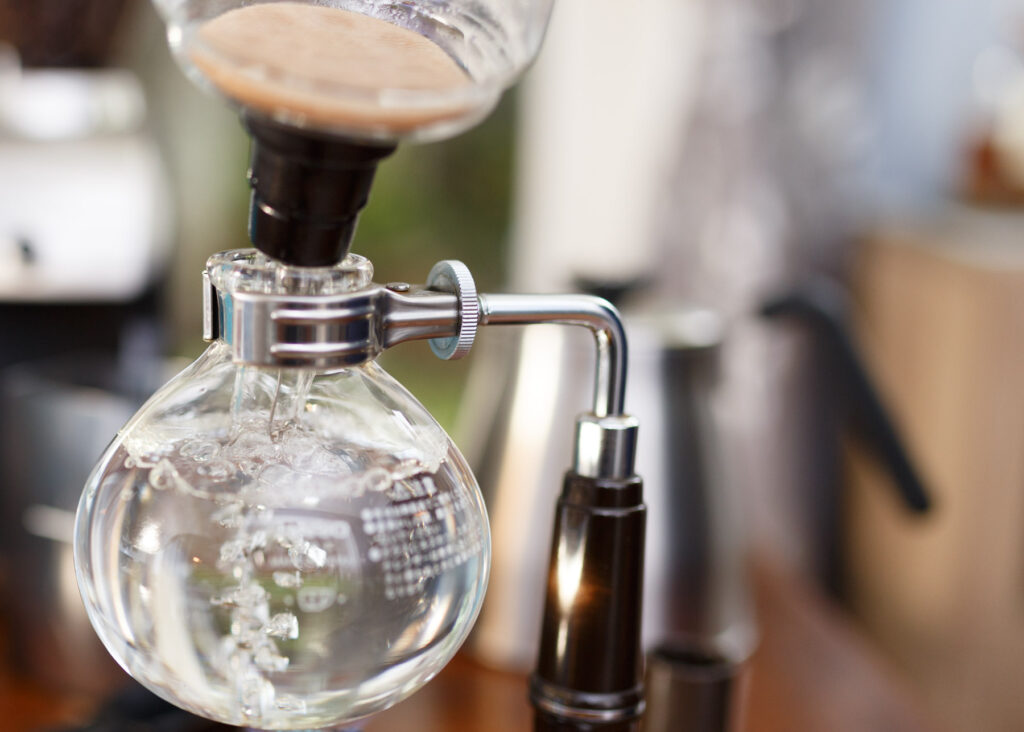
Once I saw the bubbles forming on the steel of the filter spring, I straightened the top brewing chamber and created a seal between it and the bottom chamber thanks to the Technica’s rubber gasket at its midpoint. The rubber to glass contact created a good seal, and I marvelled at the ingenuity behind the design. It was like being an active part in a scientific experiment.
Now it was time for the main event—the infusion of coffee and water. Water started moving up the siphon to the top chamber, thanks to the expansion of steam in the sealed lower chamber. As soon as an inch of it was in the top, I added the ground coffee and watched as it gently cascaded down, and mixed with the rising water. I also gave it one stir with a plastic spoon, to fully saturate the grinds.

With the coffee in place, I eagerly waited for the magic to happen. Water continued to heat and rise from the lower chamber, making its way to the upper one, where it mingled with the coffee. I was captivated as I observed the mesmerizing dance of coffee and water, swirling and intermingling through the turbulence steam power created. It was a delicate balance between art and science, and I felt like I was witnessing something truly special—a symphony of flavors being created right before my eyes.
All too soon, it was time to end the upper bowl show, and get coffee back into the bottom chamber. I put the included steel cap on the cloth wick burner, and slid it out and away from the siphon assembly. This triggered the next scientific step: the phase change of a gas back to a liquid, and the resulting vacuum of space it creates.
And that’s what happened. Within seconds, the brewed coffee was drawn back down the siphon, through the cloth filter, into the lower chamber. It didn’t take long, and ended with a mass of bubbles and foam created in the lower chamber. Soon, the science experiment was over!

I carefully removed the upper chamber, revealing the end result of my brewing endeavor. The aroma that filled the air was nothing short of heavenly—a rich, tantalizing scent that awakened my senses and made my taste buds tingle with excitement.
Tasting the Siphon Production
With great anticipation, I had to wait for the coffee to cool down. One of the things I remembered reading about siphon coffee was that it brewed at near perfect temperatures, but was also very hot when first served. So I waited. And waited.
Then I poured the brewed coffee into a mug, watching as it cascaded down, revealing its golden-brown hue. The first sip was pure bliss—a velvety texture with layers of complex flavors that danced on my palate. The clarity! The balance! The expression it provided!
My first siphon coffee adventure had come to an end, but the memories and the magic would linger on. This peculiar brewing method had not only satisfied my caffeine cravings but had also awakened a newfound appreciation for the artistry and science behind coffee brewing. The best part is, it’s not the end of an adventure, but just a beginning!
The V60 is the love of my coffee life, but if any device could give it a run for that position, the siphon coffee maker might just be the one. I’ve brewed with it a dozen times since, and every single brewing session felt like an adventure, an opportunity to explore different coffee beans and unlock their unique flavors.
So, if you ever find yourself face to face with a siphon coffee maker, don’t be intimidated. Embrace the curiosity, ignite the flame, and embark on your own magical journey of brewing perfection. Who knows, you might just discover a whole new world of coffee delights waiting to be savored.


